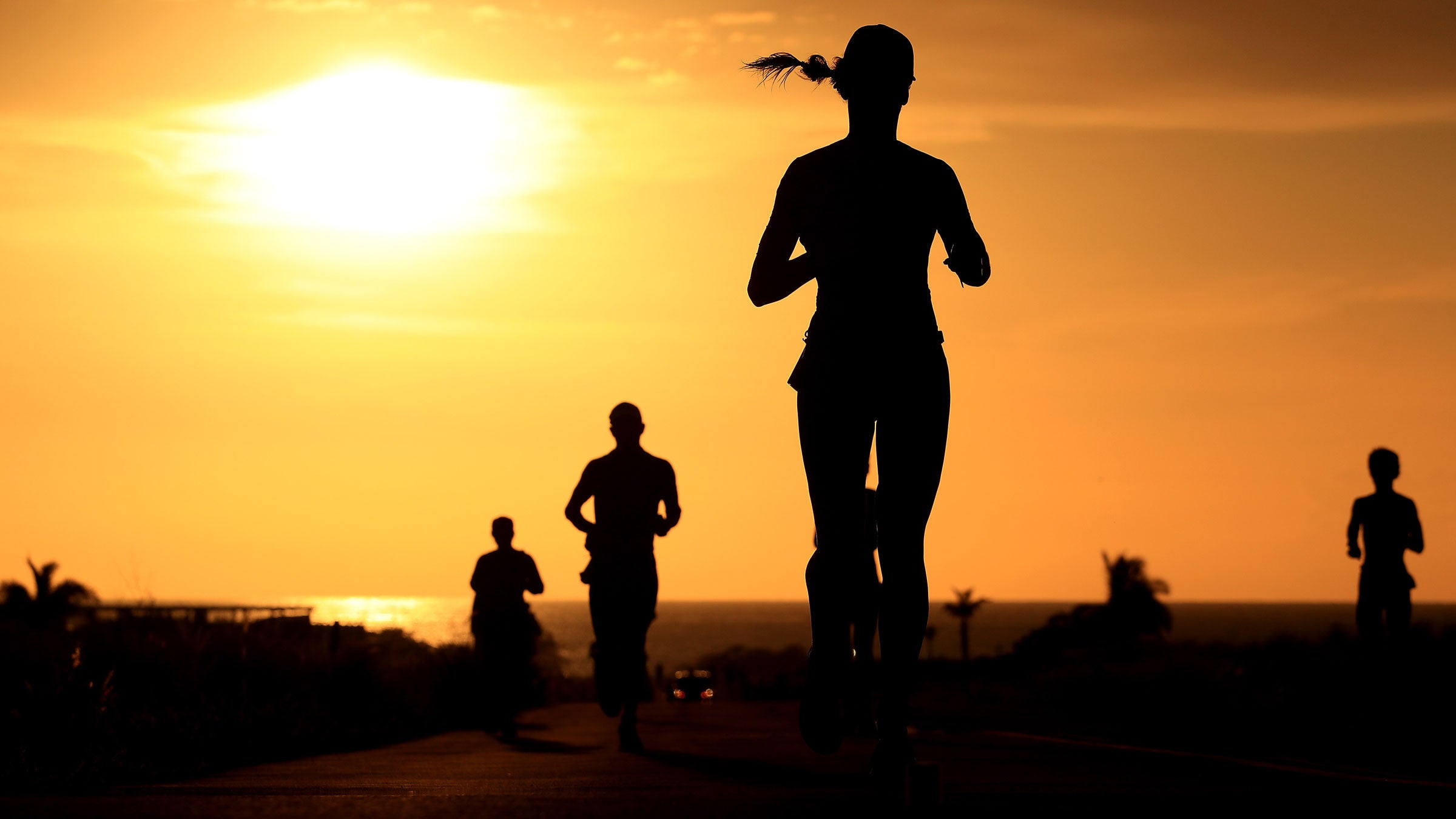Ask Stacy: How Can I Prevent GI Distress While Running?

(Photo: Tom Pennington / Getty Images)
Gastrointestinal (GI) distress happens quite frequently with running, but not so much with swimming and cycling. This is primarily due to the jostling and impact running puts on the body, blood flow changes, menstrual cycle status, and nutritional status. Remember that during exercise, blood flow is shuttled rapidly to areas where we need it—our working muscles, heart, liver, and brain. This delivers vital oxygen and nutrients to these systems, allowing them to deal with the huge increase in output that occurs during exercise. The process is controlled by the sympathetic nervous system (SNS), which then constricts blood vessels leading to our digestive organs. As much as 80% of blood flow is diverted away from the gut to support our muscles, heart, brain, thermoregulation and fueling as we work out.
More Ask Stacy:
– Is Salt Bad for Athletes?
– Which is Better, Whey or Plant Protein?
– What Effect Does Alcohol Have on My Training?
– Is Caffeine Good for Endurance Athletes?
This loss of blood volume, coupled with dehydration, significantly impairs GI function. Without adequate oxygen and blood flow, layers of the intestine begin breaking down, protein complexes known as “tight junctions” crumble, and intestinal permeability increases. “Leaky gut” allows bacterial endotoxin and other inflammatory factors to enter the intestinal lining. The higher the intensity of the workout, the more this is exacerbated and an inflamed gut is primed for intestinal disaster. When blood flow resumes (after exercise stops), the “re-perfusion” process can even lead to further damage, like oxidative stress and inflammation, which probably contributes to the “post-run runs.”
It is well documented that women suffer more than men when it comes to GI distress while running, with reported incidences more common in the days leading up to a woman’s period starting. The drop in progesterone and subsequent prostaglandin response can trigger an inflammatory response causing an increase in intestinal permeability.
From a nutritional front, what you eat and when you eat can play a role. Any foods that delay gastric emptying–fiber, fats, and protein–are candidates to induce GI symptoms. Other than sitting in the gut and leading to discomfort, these foods may also draw water into the intestinal lumen and lead to GI issues and diarrhea. This includes what you consume during your running; the carbohydrate composition and concentration of pre-and-mid-run beverages is known to play a major role in GI issues. Drinks with high carbohydrate concentration (above 4.5% – 8%) are known to delay gastric emptying, lead to fluid shifts in the intestine, and residual un-absorbed carbohydrates in the intestine. Combining a hypertonic beverage with exercise in the heat can exacerbate the intestinal damage because of dehydration.
Now, what to do? I wish I could say there was an immediate intervention to help, but there is actually a series of steps to take. We can’t change the mechanical stress of running, but the more “run fit” you are, the less incidence there is of GI issues. Training your run fitness—both duration and intensity—can help. Nutritionally, there is evidence that you can train your gut to handle higher density foods during exercise, therefore trying out a few things to see what works for you is a good idea—then stick with what you know is successful. In the meantime, from a day to day perspective, taking care of your gut microbiome by eating prebiotic and probiotic foods can help significantly. The gut microbiota ferment complex dietary polysaccharides into short chain fatty acids and seem to regulate neutrophil function and migration, reduce intestinal permeability and inhibit inflammatory cytokines—all of which help to contributing to a “stronger” intestine during exercise. Timing of your food prior to your running can help too, such as limiting “trigger” foods (which may be high fiber and/or high protein and/or high fat, depending on the individual) in the few hours leading up to your run, and reducing the concentration of carbohydrates you consume during your run.